1 of 24
Download to read offline

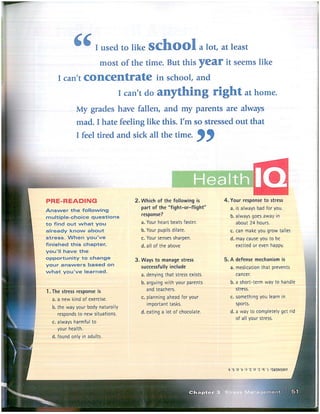
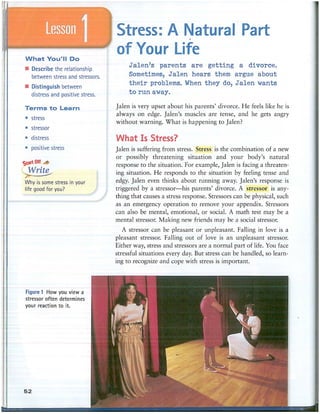
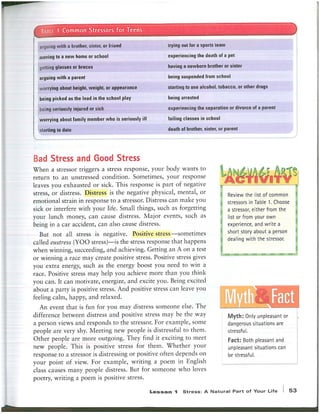
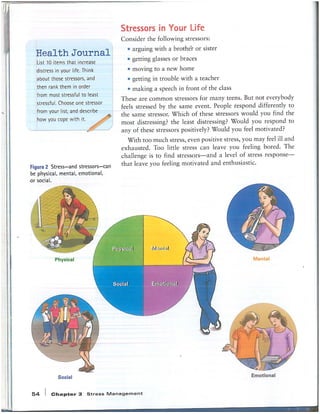
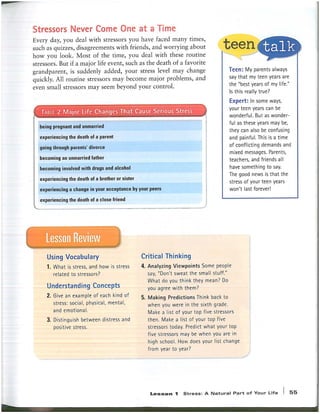
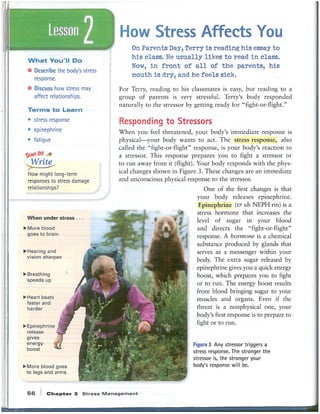
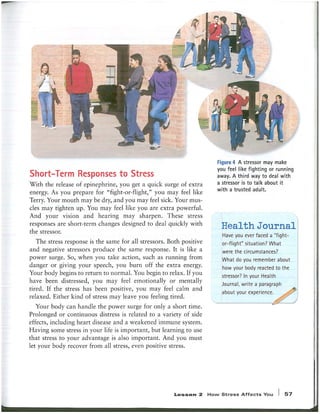


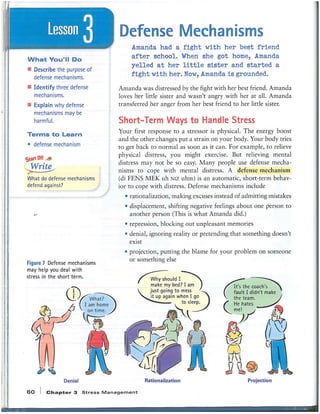
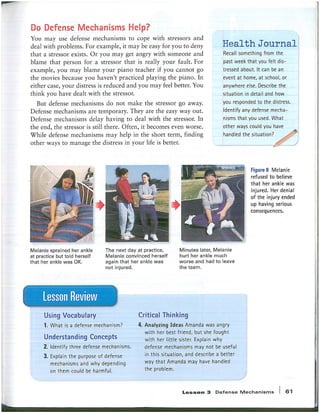
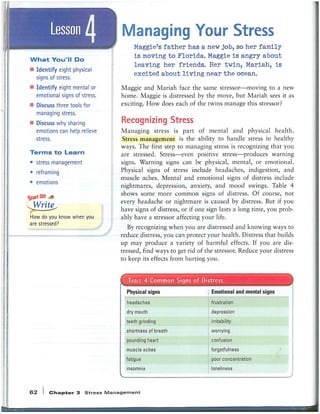


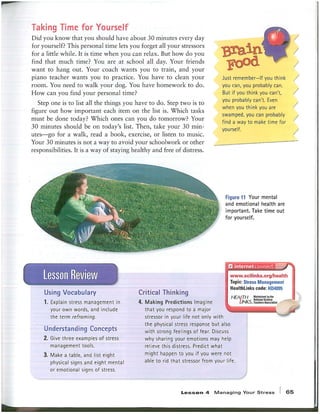
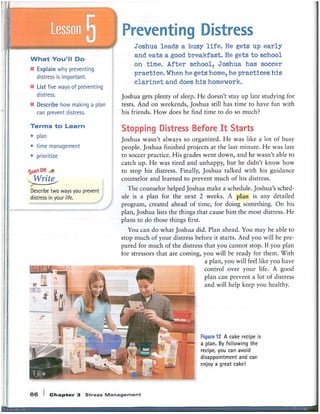

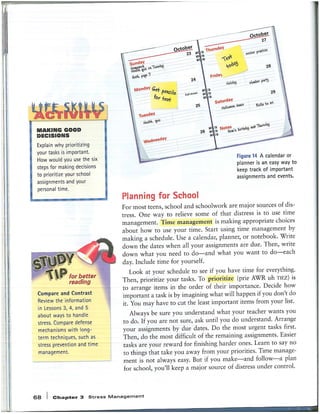
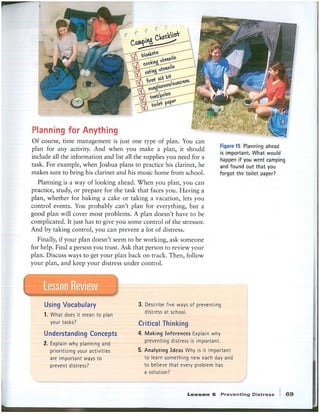
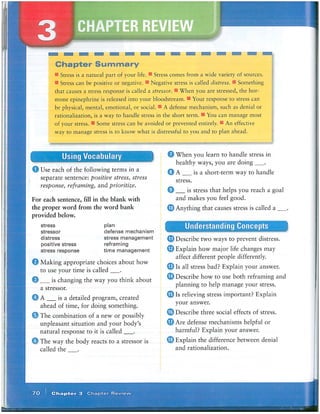
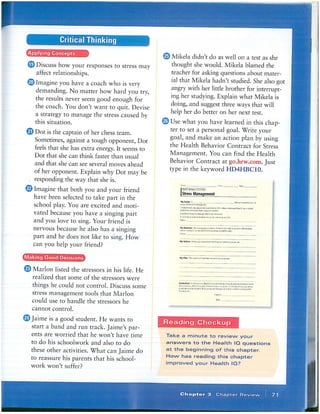

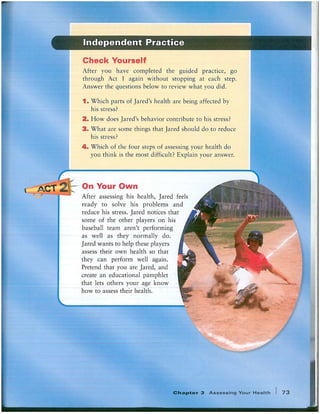
Ad
Recommended
Mental illness
Mental illnesscarlyrelf
╠²
One in six people has a mental illness. Mental illnesses are caused by imbalances in brain chemicals that affect thoughts, feelings, and behaviors. They can be triggered by genetic and environmental factors. Common mental illnesses include anxiety disorders like panic attacks, phobias, and obsessive compulsive disorder (OCD), mood disorders like depression and bipolar disorder, and schizophrenia, which causes a break from reality.Diary of anna
Diary of annacarlyrelf
╠²
Anna has been in rehab for over 7 months to treat her anorexia. In her diary entries, she documents her struggle to accept that she has a problem, her resistance to the treatment plan, and her eventual progress in gaining weight and opening up to her therapist. By the end of her time in rehab, Anna has come to understand the serious health effects of anorexia and feels committed to maintaining healthy habits going forward.Val's healthy menu ( sample)
Val's healthy menu ( sample)carlyrelf
╠²
The document provides two sample days of meals for a healthy eating menu. Each day meets the recommended daily amounts of grains (6 oz), dairy (3 cups), fruit (2 cups), vegetables (3 cups), and meat/fish/beans (6 oz). Day 1 includes a frittata for breakfast, chicken teriyaki for lunch, grilled fish for dinner and meets all recommendations. Day 2 has rice and fish for breakfast, a mongolian chicken bowl for lunch, a vegetarian burrito for dinner and also meets all recommendations.Hiv aids assignment_(nov_2011)
Hiv aids assignment_(nov_2011)carlyrelf
╠²
The document provides objectives and instructions for an 8th grade group project on creating a public service announcement (PSA) about HIV/AIDS. Students will work in groups over 3 class periods to create a poster, iMovie, or brochure. The PSA must include: the difference between HIV and AIDS, four ways HIV spreads, symptoms, health effects, treatments, prevention methods, and how HIV/AIDS has become a global issue. It should also include interesting facts and come from reliable sources, with a bibliography in MLA format. Groups will be graded on accurate and complete content, creativity, teamwork, research, and use of MLA format.Anti drugbookletrubric
Anti drugbookletrubriccarlyrelf
╠²
The document provides instructions for students to create an anti-drug booklet about alcohol and marijuana. It outlines requirements for the booklet's content including detailed descriptions of each drug, their effects, decision-making strategies, and refusal skills. Students are to conduct research using the Big6 research steps and present their findings in the booklet. They will be assessed based on their demonstration of knowledge, use of evidence, and understanding of decision-making skills.Eating disorders A time in the life 2014
Eating disorders A time in the life 2014carlyrelf
╠²
The document outlines requirements for an 8th grade assignment on eating disorders. Students must create a fictional character suffering from anorexia, bulimia, or binge eating and include their friends/family. They must present information on the disorder's signs, health impacts, treatments, and advice on healthy eating/weight control. Students will be evaluated on accurately conveying this content through a creative media project utilizing IT displaying visual aids, and citing reliable sources in MLA format. Recommended websites provide information on eating disorders to help students complete the assignment.Healthy eating menu lamt
Healthy eating menu lamtcarlyrelf
╠²
This document provides a sample 2-day healthy eating menu for people aged 12-14. Day 1 consists of a perfect muesli breakfast with soy milk, a peanut butter and banana sandwich for a snack, veggie sticks, a Greek salad for lunch with hummus, a chicken teriyaki dinner with banana bread and milk. Day 2 includes a peanut butter and banana sandwich with milk for breakfast, a fruit cup and veggie sticks for snacks, a veggie burger for lunch with hummus, a tuna salad sandwich and banana smoothie, and fried rice with chicken and milk for dinner. The menu meets daily recommended amounts of grains, vegetables, fruits, dairy and protein.Manila dating guide
Manila dating guide carlyrelf
╠²
This document provides dating tips and guidelines for safety and healthy relationships. It suggests public date activities like movies, restaurants, arcades, and school events. It recommends telling a friend where you're going, meeting in public, not leaving drinks unattended, and avoiding giving out private information. The document also lists healthy ways to show affection like hugging and spending quality time together. Characteristics of healthy relationships include openly communicating, respecting each other, listening, and supporting each other. Group dating is suggested as a way to stay safe.Depression misconceptionvsrealityrubric
Depression misconceptionvsrealityrubriccarlyrelf
╠²
This document outlines the requirements and rubric for an assignment where students in an 8th grade mental health unit will create a poster about misconceptions and realities of depression. The poster must describe one misconception and explain the truth using at least 5 facts, statistics, and 3 quotes from research. It should communicate understanding of the topic creatively through visual design and concepts. The teacher will assess students based on transfer of learning, detail, explanation, critical thinking, communication, originality, and use of visuals.Hiv movie brainstorming_sheet
Hiv movie brainstorming_sheetcarlyrelf
╠²
HIV is a virus that can lead to AIDS if not treated. It can be prevented through abstinence or condom use and is transmitted through bodily fluids. Getting tested is important, as early diagnosis and treatment can help manage the virus and prevent developing AIDS.Eating disorder self assessment
Eating disorder self assessmentcarlyrelf
╠²
The document appears to be a self-assessment questionnaire for eating disorders. It contains 19 multiple choice questions regarding behaviors and concerns related to eating, weight, and body image. Respondents are instructed to give themselves points for certain answers, with higher point values indicating greater cause for concern or need for evaluation of disordered eating. Total scores of 6-15 are recommended for evaluation, and 16 or above or presence of additional risk factors are considered urgent cause for evaluation.Wellness healthy menu (1)
Wellness healthy menu (1)carlyrelf
╠²
The document provides a sample 2-day healthy menu and personal nutrition plan. Day 1 of the menu includes breakfast items like cornflakes and an omelet, snacks such as a banana smoothie and potato salad, and meals like sushi, a cheese sandwich, and rice and veggies for dinner. The total intake for Day 1 is listed for grains, dairy, protein, fruits, and vegetables. Day 2 of the menu lists similar breakfast, snack, and dinner items. The personal nutrition plan recommends daily intake goals to aim for grains, vegetables, fruits, dairy and protein.Healthy eating menu tina
Healthy eating menu tinacarlyrelf
╠²
The document outlines Tina Elizalde's personal healthy eating plan for two days. It includes menus for breakfast, lunch, snacks and dinner that meet the recommended daily amounts of grains, dairy, fruits, vegetables, and meat/fish/beans. Day 1's menu meets the daily recommendations and includes a peanut butter banana sandwich, veggie sticks, Greek salad, mushroom and sausage quiche, and pasta with pesto. Day 2's menu also meets the recommendations and includes a fruit cup, sardines on wheat bread, banana bread, ham and cheese roll, and chicken teriyaki.KidzYoga in Schools
KidzYoga in Schoolscarlyrelf
╠²
KidzYoga in Schools is a presentation about introducing yoga into schools. It discusses what yoga is, the benefits of yoga for students in reducing stress. It then provides examples of simple yoga poses that could be taught in schools, such as rocking horse, tree, and triangle poses. The presentation ends by listing the sources of images used in the slides.Grade 8 wellness open house
Grade 8 wellness open house carlyrelf
╠²
The document outlines a grade 8 wellness course that covers four types of well-being: physical, emotional, mental, and social. It examines the relationship between responsibility, sound decision-making, and good health. The course consists of four units that cover topics like physical fitness, nutrition, substance abuse, and sexual health. It also provides information on assessment and examples of student work.Well 8 course requirements (201415)
Well 8 course requirements (201415)carlyrelf
╠²
This document outlines the Grade 8 Wellness course which focuses on physical, emotional, mental and social well-being. The course covers topics like fitness, nutrition, substance abuse, relationships and sexuality. It is taught through presentations, discussions, readings and projects. Students are expected to follow ground rules of respecting others and maintaining confidentiality. Assessment is based on knowledge and understanding, application of knowledge, and communication, with units covering health, mental health, substance abuse and sexual health.Teen depression handout
Teen depression handoutcarlyrelf
╠²
The document discusses the difference between normal sadness and depression in teenagers. It notes that feelings of sadness are common during adolescence but can become problematic if they interfere with daily life and persist over an extended period of time. The document provides a checklist of common symptoms of depression and advises seeking help from a medical professional if several symptoms are experienced nearly every day for at least two weeks. It also offers self-help strategies teenagers can use to help manage feelings of sadness, such as exercising, spending time with friends, getting sufficient sleep, and adopting a more positive outlook.Healthy menu rubric
Healthy menu rubriccarlyrelf
╠²
The document provides requirements and rubrics for students to design a 2-3 day healthy eating menu plan for a teenager based on their age, gender, activity level, and foods available in their school cafeteria. The plan must include breakfast, lunch, dinner, and 2 snacks per day listing details of meals including serving sizes. Using the food pyramid as a guide, students must show the recommended amounts from each food group. The menu should include a variety of colorful, appealing, and healthy options avoiding high fat or sugar items. Students will be assessed on their knowledge of healthy choices, explanation of serving sizes and food groups, creating a balanced menu according to food pyramid guidelines, and consideration of other diet choices.Hiv aids
Hiv aids carlyrelf
╠²
- HIV/AIDS is a serious, deadly disease that has infected over 70 million people globally since being identified in the 1980s. Currently, there are over 34 million people living with HIV worldwide.
- HIV weakens the immune system by destroying important immune cells called CD4 cells. If untreated, HIV can develop into AIDS, leaving the body vulnerable to infections and diseases. While antiretroviral drugs can suppress HIV and prolong life, there is currently no cure for HIV/AIDS.
- HIV is transmitted through bodily fluids like blood, semen, vaginal fluids, and breast milk. Common routes of transmission include unprotected sex and sharing needles. Casual contact like hugging, kissing, or mosquito bitesAnxiety disorders
Anxiety disorderscarlyrelf
╠²
The document discusses various anxiety disorders including generalized anxiety disorder, social anxiety, phobias, and panic disorder. It provides an overview of each disorder and includes a bibliography of sources on the topics. The author explores solutions to anxiety issues and their reasons for choosing this issue to research.Dyslexia health buzz sydney
Dyslexia health buzz sydneycarlyrelf
╠²
This document discusses dyslexia, including what it is, how it affects teenagers, and potential solutions. It explores dyslexia through different sections such as causes and effects, challenges faced by teens, and approaches to help overcome dyslexia. The document concludes by explaining why dyslexia was chosen as the topic and providing a bibliography in MLA format with sources on dyslexia facts, symptoms, famous people with dyslexia, and definitions of dyslexia.Schizophrenia razel
Schizophrenia razelcarlyrelf
╠²
Schizophrenia is a chronic mental disorder that causes abnormal thinking, perceptions, emotions, language, and behavior. Early signs include delusions, hallucinations, and disorganized speech or behavior. Chronic signs involve negative symptoms like reduced emotional expression and apathy. The causes are unknown but likely involve a combination of genetic and environmental factors. There are different types of schizophrenia defined by their symptoms.Relf advisory slideshow open house presentation
Relf advisory slideshow open house presentationcarlyrelf
╠²
The document provides information about advisory class, including that it is meant to build relationships, teach life skills, and provide a small supportive community within a larger school. It discusses the goals of advisory to support self-awareness, sense of belonging, and fun, as well as cultivate caring, ethical, self-directed, creative, balanced, and responsible dispositions. Examples of advisory activities are given such as visual similes and a counting challenge.Language examples
Language examplescarlyrelf
╠²
This document provides lists of persuasive and emotive language that can be used when writing arguments. It separates language into positive and negative categories, and also provides vocabulary for comparing and contrasting ideas, explaining concepts, indicating cause and effect, and concluding arguments. The document acts as a reference for students to draw from to strengthen their persuasive writing skills.Anti Drug Booklet 201415
Anti Drug Booklet 201415carlyrelf
╠²
The document provides instructions for students to create an anti-drug booklet about alcohol and marijuana. It outlines the content requirements including researching 6 questions each about the drugs' effects on the mind and body, explanations of terms like blood alcohol concentration and gateway drugs, and descriptions of decision making and refusal skills. Students are to follow research steps including defining tasks, seeking credible information, citing sources, and self-evaluating their work. The booklet will be graded based on demonstrated knowledge, use of evidence, creativity, and communication skills.More Related Content
Viewers also liked (15)
Eating disorders A time in the life 2014
Eating disorders A time in the life 2014carlyrelf
╠²
The document outlines requirements for an 8th grade assignment on eating disorders. Students must create a fictional character suffering from anorexia, bulimia, or binge eating and include their friends/family. They must present information on the disorder's signs, health impacts, treatments, and advice on healthy eating/weight control. Students will be evaluated on accurately conveying this content through a creative media project utilizing IT displaying visual aids, and citing reliable sources in MLA format. Recommended websites provide information on eating disorders to help students complete the assignment.Healthy eating menu lamt
Healthy eating menu lamtcarlyrelf
╠²
This document provides a sample 2-day healthy eating menu for people aged 12-14. Day 1 consists of a perfect muesli breakfast with soy milk, a peanut butter and banana sandwich for a snack, veggie sticks, a Greek salad for lunch with hummus, a chicken teriyaki dinner with banana bread and milk. Day 2 includes a peanut butter and banana sandwich with milk for breakfast, a fruit cup and veggie sticks for snacks, a veggie burger for lunch with hummus, a tuna salad sandwich and banana smoothie, and fried rice with chicken and milk for dinner. The menu meets daily recommended amounts of grains, vegetables, fruits, dairy and protein.Manila dating guide
Manila dating guide carlyrelf
╠²
This document provides dating tips and guidelines for safety and healthy relationships. It suggests public date activities like movies, restaurants, arcades, and school events. It recommends telling a friend where you're going, meeting in public, not leaving drinks unattended, and avoiding giving out private information. The document also lists healthy ways to show affection like hugging and spending quality time together. Characteristics of healthy relationships include openly communicating, respecting each other, listening, and supporting each other. Group dating is suggested as a way to stay safe.Depression misconceptionvsrealityrubric
Depression misconceptionvsrealityrubriccarlyrelf
╠²
This document outlines the requirements and rubric for an assignment where students in an 8th grade mental health unit will create a poster about misconceptions and realities of depression. The poster must describe one misconception and explain the truth using at least 5 facts, statistics, and 3 quotes from research. It should communicate understanding of the topic creatively through visual design and concepts. The teacher will assess students based on transfer of learning, detail, explanation, critical thinking, communication, originality, and use of visuals.Hiv movie brainstorming_sheet
Hiv movie brainstorming_sheetcarlyrelf
╠²
HIV is a virus that can lead to AIDS if not treated. It can be prevented through abstinence or condom use and is transmitted through bodily fluids. Getting tested is important, as early diagnosis and treatment can help manage the virus and prevent developing AIDS.Eating disorder self assessment
Eating disorder self assessmentcarlyrelf
╠²
The document appears to be a self-assessment questionnaire for eating disorders. It contains 19 multiple choice questions regarding behaviors and concerns related to eating, weight, and body image. Respondents are instructed to give themselves points for certain answers, with higher point values indicating greater cause for concern or need for evaluation of disordered eating. Total scores of 6-15 are recommended for evaluation, and 16 or above or presence of additional risk factors are considered urgent cause for evaluation.Wellness healthy menu (1)
Wellness healthy menu (1)carlyrelf
╠²
The document provides a sample 2-day healthy menu and personal nutrition plan. Day 1 of the menu includes breakfast items like cornflakes and an omelet, snacks such as a banana smoothie and potato salad, and meals like sushi, a cheese sandwich, and rice and veggies for dinner. The total intake for Day 1 is listed for grains, dairy, protein, fruits, and vegetables. Day 2 of the menu lists similar breakfast, snack, and dinner items. The personal nutrition plan recommends daily intake goals to aim for grains, vegetables, fruits, dairy and protein.Healthy eating menu tina
Healthy eating menu tinacarlyrelf
╠²
The document outlines Tina Elizalde's personal healthy eating plan for two days. It includes menus for breakfast, lunch, snacks and dinner that meet the recommended daily amounts of grains, dairy, fruits, vegetables, and meat/fish/beans. Day 1's menu meets the daily recommendations and includes a peanut butter banana sandwich, veggie sticks, Greek salad, mushroom and sausage quiche, and pasta with pesto. Day 2's menu also meets the recommendations and includes a fruit cup, sardines on wheat bread, banana bread, ham and cheese roll, and chicken teriyaki.KidzYoga in Schools
KidzYoga in Schoolscarlyrelf
╠²
KidzYoga in Schools is a presentation about introducing yoga into schools. It discusses what yoga is, the benefits of yoga for students in reducing stress. It then provides examples of simple yoga poses that could be taught in schools, such as rocking horse, tree, and triangle poses. The presentation ends by listing the sources of images used in the slides.Grade 8 wellness open house
Grade 8 wellness open house carlyrelf
╠²
The document outlines a grade 8 wellness course that covers four types of well-being: physical, emotional, mental, and social. It examines the relationship between responsibility, sound decision-making, and good health. The course consists of four units that cover topics like physical fitness, nutrition, substance abuse, and sexual health. It also provides information on assessment and examples of student work.Well 8 course requirements (201415)
Well 8 course requirements (201415)carlyrelf
╠²
This document outlines the Grade 8 Wellness course which focuses on physical, emotional, mental and social well-being. The course covers topics like fitness, nutrition, substance abuse, relationships and sexuality. It is taught through presentations, discussions, readings and projects. Students are expected to follow ground rules of respecting others and maintaining confidentiality. Assessment is based on knowledge and understanding, application of knowledge, and communication, with units covering health, mental health, substance abuse and sexual health.Teen depression handout
Teen depression handoutcarlyrelf
╠²
The document discusses the difference between normal sadness and depression in teenagers. It notes that feelings of sadness are common during adolescence but can become problematic if they interfere with daily life and persist over an extended period of time. The document provides a checklist of common symptoms of depression and advises seeking help from a medical professional if several symptoms are experienced nearly every day for at least two weeks. It also offers self-help strategies teenagers can use to help manage feelings of sadness, such as exercising, spending time with friends, getting sufficient sleep, and adopting a more positive outlook.Healthy menu rubric
Healthy menu rubriccarlyrelf
╠²
The document provides requirements and rubrics for students to design a 2-3 day healthy eating menu plan for a teenager based on their age, gender, activity level, and foods available in their school cafeteria. The plan must include breakfast, lunch, dinner, and 2 snacks per day listing details of meals including serving sizes. Using the food pyramid as a guide, students must show the recommended amounts from each food group. The menu should include a variety of colorful, appealing, and healthy options avoiding high fat or sugar items. Students will be assessed on their knowledge of healthy choices, explanation of serving sizes and food groups, creating a balanced menu according to food pyramid guidelines, and consideration of other diet choices.More from carlyrelf (20)
Hiv aids
Hiv aids carlyrelf
╠²
- HIV/AIDS is a serious, deadly disease that has infected over 70 million people globally since being identified in the 1980s. Currently, there are over 34 million people living with HIV worldwide.
- HIV weakens the immune system by destroying important immune cells called CD4 cells. If untreated, HIV can develop into AIDS, leaving the body vulnerable to infections and diseases. While antiretroviral drugs can suppress HIV and prolong life, there is currently no cure for HIV/AIDS.
- HIV is transmitted through bodily fluids like blood, semen, vaginal fluids, and breast milk. Common routes of transmission include unprotected sex and sharing needles. Casual contact like hugging, kissing, or mosquito bitesAnxiety disorders
Anxiety disorderscarlyrelf
╠²
The document discusses various anxiety disorders including generalized anxiety disorder, social anxiety, phobias, and panic disorder. It provides an overview of each disorder and includes a bibliography of sources on the topics. The author explores solutions to anxiety issues and their reasons for choosing this issue to research.Dyslexia health buzz sydney
Dyslexia health buzz sydneycarlyrelf
╠²
This document discusses dyslexia, including what it is, how it affects teenagers, and potential solutions. It explores dyslexia through different sections such as causes and effects, challenges faced by teens, and approaches to help overcome dyslexia. The document concludes by explaining why dyslexia was chosen as the topic and providing a bibliography in MLA format with sources on dyslexia facts, symptoms, famous people with dyslexia, and definitions of dyslexia.Schizophrenia razel
Schizophrenia razelcarlyrelf
╠²
Schizophrenia is a chronic mental disorder that causes abnormal thinking, perceptions, emotions, language, and behavior. Early signs include delusions, hallucinations, and disorganized speech or behavior. Chronic signs involve negative symptoms like reduced emotional expression and apathy. The causes are unknown but likely involve a combination of genetic and environmental factors. There are different types of schizophrenia defined by their symptoms.Relf advisory slideshow open house presentation
Relf advisory slideshow open house presentationcarlyrelf
╠²
The document provides information about advisory class, including that it is meant to build relationships, teach life skills, and provide a small supportive community within a larger school. It discusses the goals of advisory to support self-awareness, sense of belonging, and fun, as well as cultivate caring, ethical, self-directed, creative, balanced, and responsible dispositions. Examples of advisory activities are given such as visual similes and a counting challenge.Language examples
Language examplescarlyrelf
╠²
This document provides lists of persuasive and emotive language that can be used when writing arguments. It separates language into positive and negative categories, and also provides vocabulary for comparing and contrasting ideas, explaining concepts, indicating cause and effect, and concluding arguments. The document acts as a reference for students to draw from to strengthen their persuasive writing skills.Anti Drug Booklet 201415
Anti Drug Booklet 201415carlyrelf
╠²
The document provides instructions for students to create an anti-drug booklet about alcohol and marijuana. It outlines the content requirements including researching 6 questions each about the drugs' effects on the mind and body, explanations of terms like blood alcohol concentration and gateway drugs, and descriptions of decision making and refusal skills. Students are to follow research steps including defining tasks, seeking credible information, citing sources, and self-evaluating their work. The booklet will be graded based on demonstrated knowledge, use of evidence, creativity, and communication skills.Depression misconceptionvsreality1 7handoutandrubric
Depression misconceptionvsreality1 7handoutandrubriccarlyrelf
╠²
This document outlines an assignment for an 8th grade mental health unit on depression. Students were asked to create an informational poster highlighting a common misconception about depression and the reality. The poster should include facts from provided materials and research, as well as quotes. Rubrics are provided to assess students on transfer of knowledge, detail, critical thinking, communication skills, originality, and learning habits. Students were also asked to complete a written reflection on what they learned about depression and how they can apply it going forward.Mental illness
Mental illnesscarlyrelf
╠²
One in six people have a mental illness. Mental illnesses are disorders that affect thoughts, feelings, and actions which are controlled by the brain. They can be caused by imbalances in brain chemistry and are influenced by both genetic and environmental factors. Common mental illnesses include anxiety disorders like panic attacks, phobias, and OCD, mood disorders like depression and bipolar disorder, and schizophrenia, which causes a break from reality.Obesity
Obesitycarlyrelf
╠²
Obesity is defined as an excessive amount of body fat, measured by BMI over 30 or waist circumference over 35 inches for women or 40 inches for men. It can be caused by lack of exercise, unhealthy diet, genetics, quitting smoking, age, and pregnancy. Risks of obesity include heart disease, various cancers, stroke, diabetes, and social and cardiovascular problems for adolescents. Prevention focuses on regular exercise, healthy eating, avoiding unhealthy foods, weight monitoring, and consistency.Bipolar
Bipolarcarlyrelf
╠²
Bipolar disorder is a brain disorder characterized by extreme mood swings between mania and depression that can last for long periods of time. There are three main types - Bipolar I involves alternating periods of mania and depression, Bipolar II involves hypomania and depression, and Cyclothymia involves milder periods of hypomania and depression. Genetics and brain structure/functioning contribute to the development of bipolar disorder. Symptoms include feeling very happy or depressed, changes in energy levels and concentration. The author's father and some family members have been diagnosed with cyclothymia or Bipolar I/II.Gaming Addiction
Gaming Addictioncarlyrelf
╠²
Video game addiction is defined as playing video games excessively to an unhealthy degree, most commonly among those aged 10-18. Games are designed to be addictive by fulfilling human psychological needs easily and providing escapism. Consequences of addiction include chronic back pain, neglecting family and friends, migraines, and long term sleeping problems. While 12% of gamers showed signs of addiction in 2009, addiction can be avoided by moderating play time and prioritizing school and family over games.Danger of fast food rubric
Danger of fast food rubriccarlyrelf
╠²
The document outlines the criteria and rubric for assessing a student project on the dangers of fast food. Students will create a movie to demonstrate their understanding of how personal health choices can affect risk of disease. They will be evaluated on their comprehension of the topic, ability to effectively communicate health risks to an audience through storytelling, and proper sourcing of information.Well 7 course requirements (201415)
Well 7 course requirements (201415)carlyrelf
╠²
This document outlines the Grade 7 Wellness course which focuses on physical, emotional, mental, and social well-being. The course covers four units: healthy body and fitness, respect and relationships, substance abuse, and sexual health. Students will complete assignments such as fitness flyers, videos on fast food dangers, comics on conflict resolution, and presentations on media messages. Assessment is based on knowledge and understanding, skill transfer, and communication through tests, quizzes, and projects. Ground rules emphasize respecting others and maintaining confidentiality.7 1 healthy menu plan assignmen
7 1 healthy menu plan assignmencarlyrelf
╠²
The document provides requirements for designing a 2-3 day healthy eating menu plan for a teenager using only foods available in the ISM cafeteria. The plan must include breakfast, lunch, dinner and 2 snacks per day listing details of each meal including serving sizes. The menu must be guided by the Food Pyramid recommendations for age, gender and activity level (30-60 minutes daily) and show the recommended amounts from each food group. A variety of healthy, low fat and low sugar options should be included using good IT skills and being appealing for teenagers. Students will be given 2 class periods to complete the task and check cafeteria food options. A rubric is provided to grade menus on healthy food choices, explanation of7 1 fitness flyer rubric
7 1 fitness flyer rubriccarlyrelf
╠²
This rubric evaluates students' fitness flyers that are meant to promote healthy behaviors and exercise. The flyers will be evaluated based on communication factors like design, organization and use of visuals. They will also be evaluated on knowledge and understanding factors like explaining the benefits of exercise and effects of not exercising. Additionally, the flyers will be evaluated on how well they transfer learning to teenagers by appealing to them and promoting a positive exercise message. Finally, spelling, punctuation, grammar and proper citations will be considered. The teacher will provide comments on each student's flyer and students will reflect on what they enjoyed, their strengths, areas for improvement and how the task helped them understand fitness topics.Well 7 course requirements (201415)
Well 7 course requirements (201415)carlyrelf
╠²
This document outlines the Grade 7 Wellness course which focuses on physical, emotional, mental, and social well-being. The course covers four units: healthy body and fitness, respect and relationships, substance abuse, and sexual health. Students will complete assignments such as fitness flyers, videos on fast food dangers, comics on conflict resolution, and presentations on media messages. Assessment is based on knowledge and understanding, skill transfer, and communication through tests, quizzes, and projects. Ground rules emphasize respecting others and maintaining confidentiality.Well 8 course requirements (201415)
Well 8 course requirements (201415)carlyrelf
╠²
This document outlines the Grade 8 Wellness course which covers topics related to physical, emotional, mental and social well-being. The course consists of 4 units that investigate personal safety, human development, relationships and making healthy choices. Unit topics include physical fitness, nutrition, mental illness, substance abuse, and sexual health. Students will participate in discussions, presentations and complete assignments on the units. They will be assessed on their knowledge and understanding, ability to apply concepts, and communication skills.Unit2 studentledlessontaskrubric
Unit2 studentledlessontaskrubriccarlyrelf
╠²
The rubric assesses students on a health-related lesson and magazine article they will create and present:
- The critical thinking category evaluates the lesson's essential questions, proposed solutions, and ability to empower the audience.
- Communication assesses how thought-provoking, well-paced, and engaging the lesson is and how creatively the article conveys its message.
- Connection/Collaboration examines students' empathy, equal task-sharing, focus, and timeliness in completing the group work.
- The reflection section has students identify their strengths, an important lesson learned, and areas for self-improvement.
- The teacher will provide feedback and comments on the completed assignment.Unit2 performancetaskstudenthandout.docx
Unit2 performancetaskstudenthandout.docxcarlyrelf
╠²
Students will work in groups to research and present mini-lessons on topics related to hurtful behaviors and conflict management. Each group will write a one-page magazine article on their topic and present a 10-minute lesson to the class. The article should include a scenario with problems and solutions, while the lesson should engage students through questions and involve visual aids. Topics include conflict, communication, resolving conflict, conflict at school, conflict at home, and conflict and anger. The goal is to teach classmates about preventing and addressing hurtful behaviors.Ad